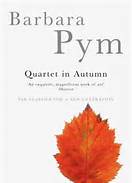Dorothy Sayers subtitled her book, The Mind of the Maker, as “An examination of God the creator reflected in the artistic imagination.” (Reviewed in From My Bookshelf on this site.) In this book, she dissects her own novel, Gaudy Night, a detective novel, into three parts: 1) A puzzle to be solved (the crime); 2) A human perplexity dealing with the relationships of the protagonists; 3) A conflict of values.
At novel’s end, the first, the puzzle is solved. In the second, the protagonists develop a new relationship, with possibilities for good or evil. Finally, the collision of values, is not “solvable” but the conflicting values, from their tension, may create a new, stronger value.
I applied Sayers’ ideas to my own novels. The romance, mystery, or other plot finds resolution. New relationships (both between the protagonists and between the protagonists and God) begin a growing process, that offer hope but not completion. Finally, a background theme in many of my novels is that of the Christian’s struggle in a postmodern world of shifting values.
In Singing in Babylon, the American protagonists feel exiled by their Christian faith within a country predominantly of another religion. When they return to the U.S., however, they sense exile from their consumer-hypnotized fellow citizens.
Quiet Deception unfolds in this country during the 1970’s, a boundary between a time of generally accepted common values and the time after, when those values changed and collided with others. Kim chooses a path already becoming less favored, one, in a cultural sense, of exile.
In Searching for Home, the protagonists constantly must exchange one home for another and eventually discover that the idea of home is at best a spiritual destination. No permanent home exists in this world.
My characters operate in a world that has lost its way, one in which values, including those common to most religious faiths, are questioned. Kate and Philip, Kim and Todd, Hannah and Patrick are remnant exiles. They struggle with the worth of old values as cultures collide.


